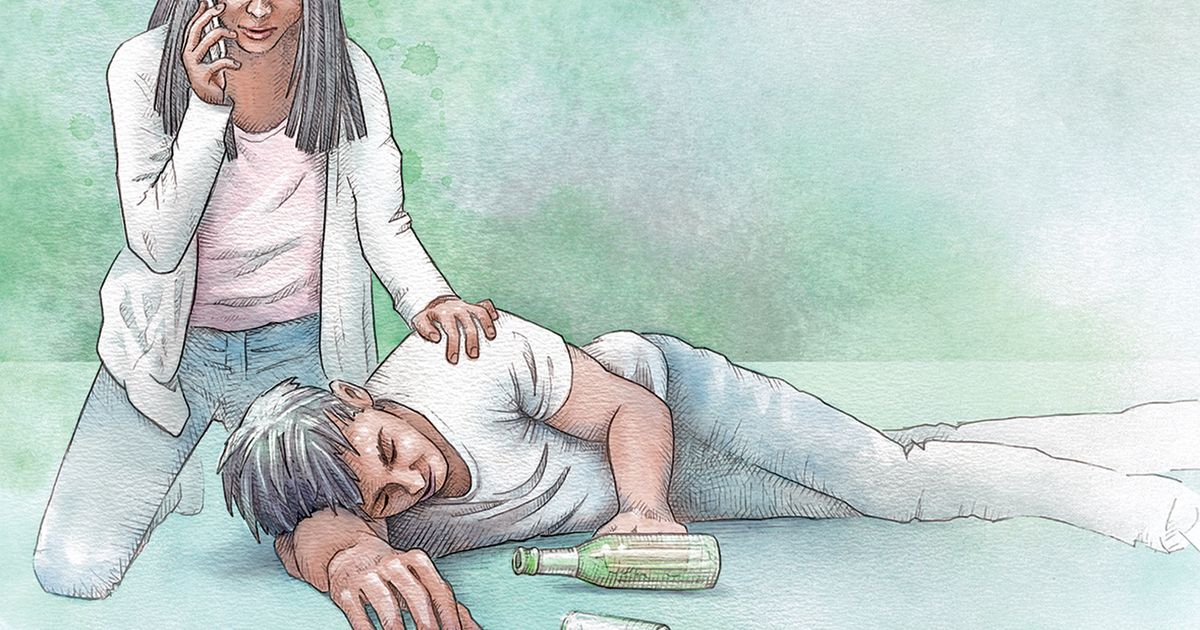How to spot, respond to a fentanyl overdose

With fentanyl overdoses on the rise and the increased accessibility of naloxone — the only drug in the market that can reverse an opioid overdose — it’s vital to know the signs of an overdose. Stepping in can save someone’s life.
Check for signs of overdose
The breathing of a person experiencing an overdose will noticeably have slowed down, said Caleb Banta-Green, an epidemiologist and professor in the University of Washington School of Medicine. Their skin may appear pale and ashy and feel cool to the touch, due to the lack of oxygen circulating in the brain, Banta-Green said. The person’s lips and fingernails may also become gray or bluish. Other people may be slumped over and unconscious.
A fentanyl overdose usually occurs within seconds or minutes, Banta-Green said.
“That’s why it’s important to act fast,” he said.
Respond
After checking for signs of an overdose, you will need to make sure the person is breathing and try to wake them up if they are unconscious.
The best way to try and wake someone up who is experiencing an overdose, Banta-Green said, is to rub your knuckles on their sternum, the bone at the center of the chest.
First, you should administer the first dose of naloxone. It can take two to three minutes for naloxone to take effect.
While waiting to see if the first dose takes effect, you should call 911.
The Good Samaritan Law in Washington ensures that by seeking medical assistance for an overdose, the victim and the person calling for help are protected from drug possession charges.
The medication comes in two forms, an injection and a nasal spray. The injection should be applied to the muscle on the upper thigh or upper arm. The nasal spray, available as Narcan, is most commonly used and is easier to manage since it’s gently inserted into one nostril.
While waiting for medical assistance, keep the unconscious person’s airflow going by trying rescue breathing for two to three minutes, said Alison Newman, program operations specialist for the Center for Community-Engaged Drug Education, Epidemiology and Research. Use a breathing mask if you have one. If the person doesn’t have a pulse, add chest compressions as well.
To give someone rescue breathing, begin by tilting their head back, lift their chin and pinch their nose, then give a full breath every five seconds. The person’s chest should rise when you exhale.
Giving rescue breaths to someone experiencing a fentanyl overdose will not cause you to overdose, said Scott Phillips, executive and medical director for the Washington Poison Center. That is a myth.
It’s safe to give people a second dose of naloxone, though their mood might be more affected upon waking up with more naloxone in their system, Newman said.
There’s no added benefit to giving someone several doses at once, so make sure to space them out, she said.
Someone who is dependent on opioids may face withdrawal symptoms depending on how much naloxone they receive and the extent of their dependence, Newman said. Opioid withdrawal symptoms can include drug craving, anxiety, agitation, sleep problems, muscle aches, runny nose, sweating, nausea, vomiting and diarrhea, according to the Food and Drug Administration.
The person who overdosed doesn’t need to be awake to be out of danger. What is important is that they’re breathing, Newman said.
Continue to monitor their symptoms until medical help arrives, even if the person wakes up.
What is going on in the body
During an overdose, a person’s breathing slows down or stops.
Fentanyl binds to opioid receptors in the brain and activates them, which causes people to feel good, euphoric and no longer feel pain.
During an overdose, opioids are signaling the brain it no longer needs to breathe, Banta-Green said.
Naloxone blocks the opioids from doing that and signals the body that it needs to breathe.
“An overdose doesn’t mean you’re a bad person,” he said. An overdose is simply just a poisoning; too much of something in your system, Banta-Green said.
Additional information about overdoses and naloxone, including a locator tool, can be found at stopoverdose.org.
